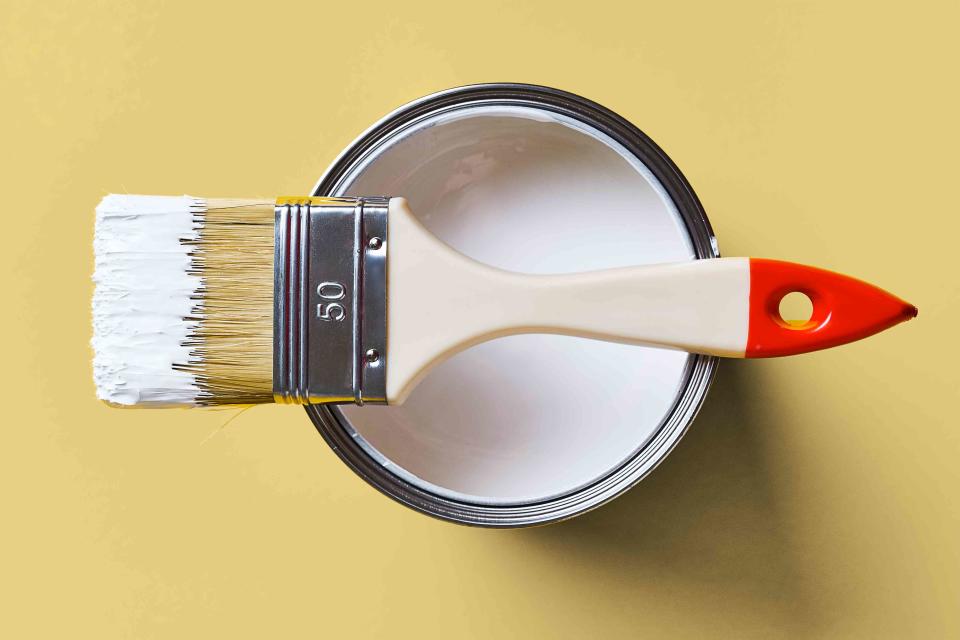What Is Paint Primer and Is It Actually Necessary?
Turns out the success of your paint project doesn't always hinge on this step. Here's when it matters—and when it doesn't.

Aleksandr Zubkov/Getty Images
If you’re looking for an easy home project that makes a big impact, there’s nothing quite like painting a room, kitchen cabinets, or even just a piece of furniture. When you're doing this yourself, you can expect to do some prep work, and one of the most important steps in paint preparation is applying primer. Or is it? It turns out you don’t always need to prime your surfaces. Here’s when you can skip primer, along with the times you absolutely need it.
Related: How to Paint a Wall Like a Pro
First of All, What Is Paint Primer?
Primer is basically just paint that's (typically) untinted, and it's applied to walls before the paint color of choice is. The texture is usually thicker than traditional paint to smooth out the wall surface and help the top coat stick. In the past, primer has been recommended for a variety of reasons, from helping to mask the existing wall color to covering up cigarette smoke odors.
When Isn't Paint Primer Necessary?
If you’ve never painted something before, you probably think every surface needs to be primed before painting. This is sort of true, but there are definitely exceptions to this rule.
When the Surface is Super Smooth and Light
“If you are painting over something flat, matte, or in good condition, you don’t necessarily need to prime,” says Jamie Davis, cofounder of Portola Paints. “Also, if you are painting dark over light, primer is not typically necessary.”
When the Existing Paint is the Same Material or Finish
Primer is also unnecessary if you’re changing colors but sticking to the same material or specialty finish. For example, Davis says, “Flat paint will stick to flat paint." And if you're painting latex paint on top of existing latex, then you don't need primer.
Related: The Right Paint Finish Can Actually Help Your Home Look Cleaner—Here's How
When You're Using A Two-in-One Product
You can also opt for paint formulations that don't require a primer because they already contain priming ingredients. These are often called "paint and primer in one." David Mottershead, the founder and managing director of Little Greene, says of the brand's Intelligent Paints, “Out of a single tin, you have primer and finish in one. This means you can go straight on to all metals including stainless steel, brass, copper and galvanize, melamine, most plastics including PVC window and door frames, all tiles and glass as well as wood and plaster surfaces."
Although a two-in-one product like Intelligent Paint can save you time and money, it is crucial to properly prepare the surface and ensure it is clean before application.
When Do You Absolutely Need To Use Primer?
If you're unsure, you should always prime a surface before painting because most surfaces do need priming. There are very specific instances though where you should definitely brush on the primer.
If You're Painting New Construction
According to Davis, new construction (such as mudded drywall, shiny surfaces, raw wood, and metal) requires primer. Choosing the right kind of primer is equally important. “There are specific primers made for almost any surface including drywall, metal, wood, and even our Lime Wash.”
If You're Going from Dark to Light Paint
It should also be applied when making a significant color change such as going from dark to light. “The clarity of color can vary depending on what you are going over. For example, a light blue over a medium gray might not have the same results as it would over a fresh white primer,” explains Davis.
If You're Painting Your Home's Exterior
Primer is equally vital for exterior surfaces, especially when painting your house. Ensuring the paint can endure heat, cold, and other environmental elements is essential.
If You're Painting Over a Different Finish
Have oil-based paint on the walls and plan to cover them up with water-based latex? You'll have to brush on some primer, but you'll need to be careful with the type of primer you use.
Tips
If you want to move forward with covering it up with water-based paint, you can use an oil-based primer on top of the oil-based paint, then coat it with your water-based paint of choice. (If you’re doing the reverse, and want to coat a water-based color with an oil, it’s much easier and won’t require special primers.
Related: Interior Designers Swear By This Easy Paint Trick For a Truly Custom Room
For more Real Simple news, make sure to sign up for our newsletter!
Read the original article on Real Simple.

